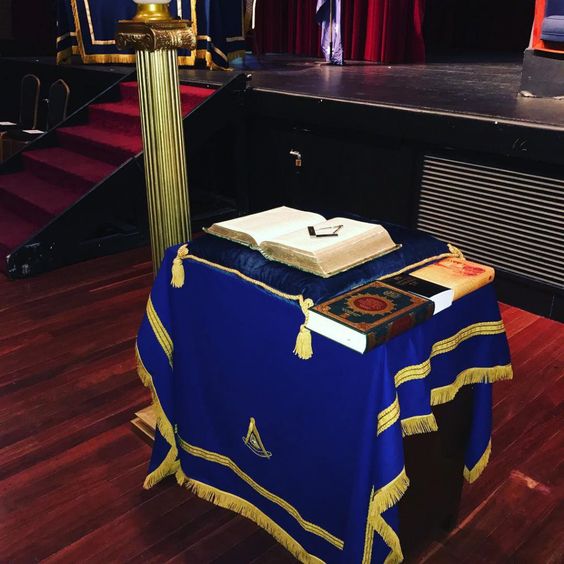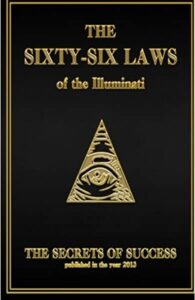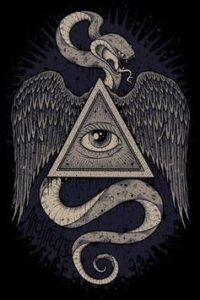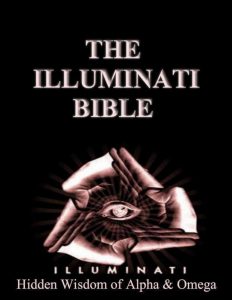Power and Protection
Power and Protection in general, you could say that the illuminati secret society gives you power. The power to make money, the power to get someone to fall in love with you, the power to succeed, etc.
But in this section I am talking about power itself, the sort of power a master has over a slave, the sort of power a dictator has over his country, etc. Power for power’s sake. Do you want to become a political, social and financial leader in your community? Join us today.
All the powerful need protection from all aspects of life. Our society will shield you providing protection to you, your family, your property and your position in society.

The Illuminati’s purpose is to secure the ongoing survival of the human species.
Like all organisms, the human species naturally strives against extinction. Though your countries have borders and your languages have barriers, all people in all places are members of the same biological family.
All humans are pieces of a collective that keeps humanity in existence.
Though you are merely a speck on the back of a grain of sand when compared to the vast number of humans born and decomposed for millennia, you are as important to your species’ survival as the greatest kings and queens.
But by nature, the human is affected by instinct, emotion, and imbalance.
A human will turn on one of its own species for reasons that will never matter in a thousand years, and likely not matter in even a hundred or ten. While you have seen the Light in the distance and chosen to follow it — even if from mere curiosity — there are millions more whose backs are turned against its glow.
The Illuminati operates various departments and programs for the benefit of all people, in all places, from all generations. By protecting the interests of humanity as a whole, our organization has ensured the ongoing dominance of the human species over every other creature and predator on this planet.



Definition: Power refers to the ability or capacity to do something or act in a particular way. It can be physical, political, social, or even electrical in nature. Power and protection
Types of Power:
- Physical Power: The physical strength or force one possesses.
- Political Power: Influence and authority in government and politics.
- Economic Power: Control over financial resources and industries.
- Social Power: Influence within a society or community.
- Electrical Power: The rate at which energy is transferred or converted in electrical circuits.
Sources of Power:
- Knowledge and Information: Those with access to information often have power.
- Wealth and Resources: Economic power can be a significant source of influence.
- Position and Authority: Leadership roles in organizations or government.
- Physical Strength: In certain contexts, physical power can be influential.
- Technology: Control over advanced technology can confer power.
Protection:
Definition: Protection involves measures taken to safeguard something or someone from harm, damage, or danger.
Types of Protection:
- Physical Protection: Security measures to protect people or property physically, such as locks, fences, or security personnel.
- Cybersecurity: Protecting computer systems, networks, and data from cyber threats.
- Legal Protection: Enforcing laws and regulations to protect individuals and their rights.
- Environmental Protection: Preserving natural resources and ecosystems.
- Personal Protection: Measures individuals take to ensure their safety, such as self-defense training.
Importance of Protection:
- Ensures safety and security in various aspects of life.
- Protects individuals’ rights and privacy.
- Preserves the environment for future generations. Power and protection
- Maintains the integrity of information and data. Power and protection
Challenges in Protection:
- Evolving threats and vulnerabilities in the digital age.
- Balancing individual rights with the need for collective security. Power and protection
- Environmental protection requires global cooperation. Power and protection
Examples of Protection:
- Installing antivirus software to protect against malware.
- Wearing a helmet for personal safety while biking. Power and protection
- Enforcing laws against theft and fraud.
- Implementing fire safety measures in buildings. Power and protection
Protection in Society:
- Government agencies, like the police, provide protection to citizens. Power and protection
- Companies invest in cybersecurity to protect customer data. Power and protection
- Non-profit organizations work to protect the environment. Power and protection
Remember that power and protection are interconnected in various ways. Power and protection People or entities with power often have the means to protect themselves and others, while those with protection can influence power dynamics in society. Power and protection
Definition: Magic power, often referred to as magical abilities or supernatural powers, involves the use of mystical or paranormal forces to achieve various effects or outcomes. Power and protection
Types of Magic Powers:
- Elemental Magic: Manipulation of natural elements like fire, water, earth, and air.
- Divination: The ability to foresee future events or gain insight through supernatural means. Power and protection
- Telekinesis: Moving objects with the power of the mind. Power and protection
- Healing Powers: The capacity to restore health and cure ailments.
- Shape-Shifting: The ability to change one’s physical form. Power and protection
- Telepathy: Communicating with others through thoughts.
- Summoning: Bringing creatures or objects into existence through magic.
- Curses and Hexes: Inflicting harm or misfortune upon others through magic.
Cultural Variations: Different cultures and mythologies have their own interpretations of magic powers. For example, in Western folklore, wizards and witches are commonly associated with magic, while in Eastern cultures, there are various traditions of martial arts and spiritual practices that involve supernatural abilities.
Magic in Fiction and Fantasy: Magic powers play a significant role in literature, movies, and video games within the fantasy genre. Characters like Harry Potter, Gandalf, and Merlin are famous for their magical abilities.
Symbolism: In many stories, magic power can symbolize knowledge, hidden potential, or the ability to transcend ordinary limitations. Power and protection
Ethical Considerations: The use of magic power often raises ethical questions about responsibility, consequences, and the moral implications of using such abilities. Power and protection
Limitations and Weaknesses: Many fictional depictions of magic power include limitations or weaknesses to create tension and conflict within the story. For example, a character may only be able to use their magic under certain conditions or at a great personal cost.
Pop Culture References: Magic power has a significant presence in pop culture, including in role-playing games, television series, and fantasy literature, where it often serves as a central plot element.
Sorcerers and Wizards: Individuals who possess magic power are often referred to as sorcerers, wizards, witches, mages, or magicians, depending on the cultural context.
Belief and Superstition: In some real-world cultures, there are still beliefs in the existence of individuals with magical powers, often associated with healing, divination, or protection against supernatural forces.
It’s important to note that magic power is a fictional or mythical concept in most contexts and should not be confused with real-world science or abilities. It primarily exists as a form of entertainment and storytelling in literature and popular culture.
Definition: Powerful protection involves the implementation of strong, reliable, and comprehensive safeguards to ensure the safety, security, or well-being of individuals, assets, or information. Power and protection
Examples of Powerful Protection:
- Military Defense: A nation’s armed forces, including its army, navy, and air force, provide powerful protection against external threats.
- Cybersecurity: Advanced cybersecurity systems and protocols protect computer networks, data, and digital assets from cyberattacks.
- Healthcare Vaccinations: Vaccination programs provide powerful protection against various diseases and epidemics.
- Insurance: Insurance policies offer financial protection against unexpected events, such as accidents, illness, or property damage.
- Security Systems: High-quality security systems, including surveillance cameras, alarms, and access control, provide powerful protection for homes and businesses. Power and protection
Components of Powerful Protection:
- Preventive Measures: Actions taken to prevent potential threats or risks from materializing.
- Response Plans: Protocols and strategies to address and mitigate threats when they occur.
- Resilience: Building systems or structures that can withstand or recover from adverse events.
- Knowledge and Preparedness: Being informed and ready to respond effectively to emergencies.
Personal Safety: On an individual level, powerful protection may include self-defense training, personal safety awareness, and the use of safety equipment such as helmets, seat belts, and life jackets. Power and protection
Information Security: In the digital age, powerful protection extends to the security of sensitive information, including personal data, financial records, and intellectual property. Power and protection
Environmental Protection: Governments and organizations implement policies and practices to protect the environment and natural resources from pollution, deforestation, and other threats. Power and protection
Legal Protections: Laws and regulations are in place to provide legal protection for individuals’ rights, freedoms, and privacy. Power and protection
Powerful Protection and Vulnerabilities: Identifying vulnerabilities and addressing them is crucial to ensuring powerful protection. Regular risk assessments help organizations and individuals strengthen their protective measures. Power and protection
Balancing Act: Balancing powerful protection with other considerations, such as individual rights and privacy, is essential. Overly intrusive or restrictive protective measures can have negative consequences.
Global Cooperation: In an interconnected world, addressing global challenges like climate change and cybersecurity often requires cooperation among nations and organizations to provide powerful protection on a broader scale.
In summary, powerful protection involves the implementation of robust and effective measures to safeguard against a wide range of threats and risks. It encompasses various aspects of life, from personal safety to national security and environmental conservation.
Definition: Ancestral protection involves honoring, connecting with, and seeking the support and protection of one’s ancestors, typically through rituals, ceremonies, or prayers.
Cultural Variations: Ancestral protection practices vary significantly from one culture to another. Different cultures have their own customs, beliefs, and rituals related to ancestors. Power and protection
Importance:
- Guidance: Ancestors are often seen as wise and experienced, and their guidance can be sought in making important life decisions.
- Blessings and Prosperity: Many believe that honoring ancestors can bring blessings, good fortune, and prosperity to the living descendants.
- Protection: Ancestors are sometimes believed to provide protection from harm, both physical and spiritual. Power and protection
Rituals and Practices:
- Ancestor Veneration: This involves setting up altars or shrines with offerings such as food, incense, and symbolic items to pay respects to ancestors.
- Ancestral Ceremonies: Special ceremonies or rituals may be performed on specific occasions or anniversaries to honor and seek the protection of ancestors.
- Prayers and Invocations: Individuals may pray or invoke the names of their ancestors, asking for their guidance and protection.
- Ancestral Stories and Traditions: Oral traditions and stories about ancestors are passed down through generations to keep their memory alive.
Ancestral Spirits: In some belief systems, it is thought that the spirits of ancestors continue to exist in some form and can influence the lives of their descendants.
Family and Community Bonds: Ancestral protection practices can strengthen family and community bonds as they often involve collective participation and shared traditions.
Ancestor Worship vs. Ancestor Respect: While some cultures practice ancestor worship, where ancestors are revered and even considered divine, others simply show deep respect and gratitude for their ancestors without worshiping them as gods.
Modern Interpretations: In contemporary society, ancestral protection may take on new forms, such as genealogy research, cultural heritage preservation, and even the creation of digital memorials for deceased loved ones.
Ancestral Protection Around the World: Ancestral protection is found in various cultures, including Chinese ancestor veneration, African ancestor worship, Native American ancestor traditions, and more.
Personal Connection: Ancestral protection can provide a sense of connection to one’s roots, history, and identity, fostering a deeper understanding of one’s place in the world.
In summary, ancestral protection is a deeply rooted and culturally significant belief that involves honoring and seeking the guidance and protection of one’s ancestors. It reflects the idea that the wisdom and blessings of past generations can continue to influence and support the living.
Bavarian Illuminati (18th Century):
- The historical Illuminati refers to the Bavarian Illuminati, a secret society founded on May 1, 1776, by Adam Weishaupt in Ingolstadt, Bavaria (modern-day Germany).
- Its goals were to promote Enlightenment ideals, secularism, and the separation of church and state.
- The group was suppressed and disbanded by the Bavarian government in the late 1780s, and it did not have any lasting global influence.
Modern Conspiracy Theories:
- In contemporary culture, the term “Illuminati” is often associated with various conspiracy theories that suggest a secret, shadowy organization with immense power and control over world events.
- These conspiracy theories often claim that the Illuminati control governments, financial systems, and media, and are believed to be working toward a New World Order.
Debunking the Myths:
- The idea of a powerful, global Illuminati is not supported by credible evidence and is widely considered a conspiracy theory.
- Many claims about the Illuminati’s influence are based on misinformation, mistranslations, or misinterpretations of historical events.
- Scholars and experts have repeatedly debunked these conspiracy theories.
Entertainment and Pop Culture:
- The concept of a powerful Illuminati has been popularized in literature, films, and music, often as a fictional or dramatic element.
- It is frequently used for storytelling and entertainment purposes.
In summary, the historical Illuminati, the Bavarian secret society founded in the 18th century, had specific goals related to Enlightenment ideals but was disbanded long ago. The modern notion of a powerful and secretive global Illuminati is largely a conspiracy theory with no credible evidence to support it. It is essential to critically evaluate such claims and rely on credible sources when assessing information about secretive organizations or conspiracy theories.
Here are some key points to understand regarding the notion of Illuminati power:
Historical Origins: The term “Illuminati” originally referred to the Bavarian Illuminati, a secret society founded in 1776 by Adam Weishaupt in Bavaria, Germany. This historical group aimed to promote Enlightenment ideals, secularism, and the separation of church and state. It was suppressed and disbanded by the Bavarian government in the late 18th century.
Modern Conspiracy Theories: In modern times, the term “Illuminati” has been co-opted and used in various conspiracy theories that claim a secretive, shadowy organization with extraordinary power and influence controls world affairs. These conspiracy theories often lack credible evidence and are widely considered pseudoscience or misinformation.
Misconceptions and Myths:
- Claims about the Illuminati’s control over governments, financial systems, and media often lack substantiated evidence.
- The idea of a global Illuminati conspiracy is frequently propagated through misinterpretations of historical events, selective quoting, and mistranslations.
- Scholars and experts from various fields have debunked these conspiracy theories.
Pop Culture and Entertainment: The concept of a powerful Illuminati has been popularized in books, movies, and music as a fictional or dramatic element. It is often used for storytelling and entertainment purposes.
Critical Thinking: When encountering claims related to Illuminati power, it is essential to approach them critically and seek information from reliable and credible sources. Healthy skepticism and fact-checking are crucial in evaluating such conspiracy theories.
In summary, the idea of Illuminati power, as commonly portrayed in conspiracy theories, is not substantiated by credible evidence. It is primarily a product of misinformation and sensationalism. It is important to rely on reputable sources and exercise critical thinking when assessing claims about secretive organizations or conspiracy theories.
Introduction to Freemasonry:
- Freemasonry is one of the world’s oldest and most secretive fraternal organizations.
- It is a society of men (and, in some jurisdictions, women) who come together for moral, ethical, and social purposes.
History:
- Freemasonry’s origins can be traced back to the late 16th and early 17th centuries in Europe.
- It emerged from the guilds of stonemasons but evolved into a more philosophical and charitable organization.
Core Principles:
- Freemasonry is built upon a set of principles, including brotherly love, relief (charity), and truth.
- Masons are encouraged to live virtuous lives, uphold moral values, and support charitable causes.
Rituals and Symbols:
- Freemasonry is known for its elaborate rituals, symbols, and ceremonies.
- Masonic symbols, such as the square and compass, the all-seeing eye, and the apron, have both historical and symbolic significance.
Degrees and Lodges:
- Freemasonry is organized into a hierarchy of degrees, with the three basic degrees being Entered Apprentice, Fellow Craft, and Master Mason.
- Masonic activities typically take place in lodges, which are local chapters or meeting places.
Secrecy:
- Freemasonry is known for its secrecy, with various elements of its rituals and ceremonies being confidential.
- This secrecy has led to numerous speculations and conspiracy theories about the organization.
Philanthropy:
- Freemasonry places a strong emphasis on charity and community service.
- Masonic lodges often engage in charitable activities, including supporting hospitals, schools, and other worthy causes.
Inclusivity:
- The inclusion of women in Freemasonry varies by jurisdiction. Some branches, like Co-Freemasonry, admit both men and women, while others remain exclusively for men.
Historical Influence:
- Freemasonry has played a significant role in history, with many prominent figures, including George Washington and Benjamin Franklin, being Freemasons.
- It has also been associated with the development of democratic principles and religious tolerance.
Modern Perception:
- Freemasonry has become the subject of intrigue, myths, and conspiracy theories, often portraying the organization as secretive and powerful.
- In reality, modern Freemasonry is largely a fraternal and charitable organization focused on personal development and community service.
Membership:
- Becoming a Freemason typically involves a process of initiation and approval by the existing members of a lodge.
- It is a voluntary organization, and members often join out of a desire for personal growth and community involvement.
In conclusion, Freemasonry is a centuries-old fraternal organization with a rich history, a set of guiding principles, and a strong emphasis on charity and community service. While it has often been shrouded in secrecy and the subject of intrigue, modern Freemasonry primarily serves as a social and philanthropic institution.
